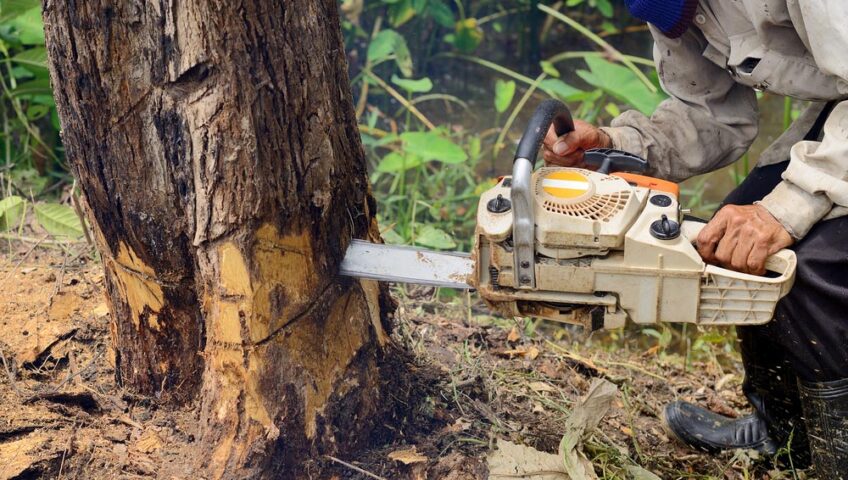Trees add beauty and shade to our outdoor spaces, playing a vital role in our gardens and landscapes. Yet, there comes a time when a tree may need to be removed for safety or health reasons. Knowing when to make this decision is key to keeping your property safe and looking its best. In this blog post, we’ll outline the main signs that indicate a tree might need to be removed.
1. Identifying Large Dead Branches
The sight of large dead branches should immediately raise concerns about a tree’s health and stability. These branches are not just unsightly; they are potential hazards that can cause damage or injury when they fall. Here’s why they’re a significant concern:
- Risk to Safety and Property: Dead branches can fall without warning, posing a risk to people, pets and property below.
- Health Indicator: The presence of dead branches often points to underlying health issues within the tree, possibly affecting its overall stability.
An assessment by a professional arborist can determine the best course of action, be it pruning the dead branches or removing the tree to prevent potential hazards.
2. The Warning Signs of Missing Bark
A tree’s bark is its armour against the outside world. When this armour starts to peel away or go missing, it’s a sign of distress:
- Vulnerability to Disease and Pests: Missing bark can expose a tree to diseases and pests, further compromising its health.
- Structural Integrity: Without its protective layer, a tree’s ability to transport nutrients is hindered, weakening its structure and stability.
Understanding the Impact
- The loss of bark interrupts essential processes within the tree, leading to a weakened state that may necessitate removal.
Professionals are skilled in diagnosing these issues, offering solutions that prioritise safety and tree health.
3. Fungal Growth: A Red Flag for Tree Health
The presence of fungi on a tree is not just a matter of appearance; it signals underlying decay and disease. This fungal growth indicates:.
- Internal Decay: Fungi often thrive on decaying organic matter, suggesting the tree’s internal structure may be compromised.
- Increased Risk: A decaying tree poses a significant risk, as it’s more likely to drop branches or topple over entirely.
Recognising and addressing fungal growth early, with the help of an arborist, can prevent potential hazards and maintain the safety of your surroundings.
Embrace a Safer Environment: Reach Out to Our Arborists
In conclusion, recognising the early signs of tree distress is crucial for maintaining a safe environment and preventing potential damage. At Summerland Tree Services, we’re dedicated to ensuring the health and safety of your trees and property. Our team of arborists brings expertise and care to every job, offering peace of mind that your outdoor space remains beautiful and safe.
We encourage proactive measures to address tree-related hazards and offer professional guidance on tree removal in Ballina when necessary. Don’t wait for a falling branch to remind you of the importance of tree maintenance. Get in touch with our team today to book a consultation.

